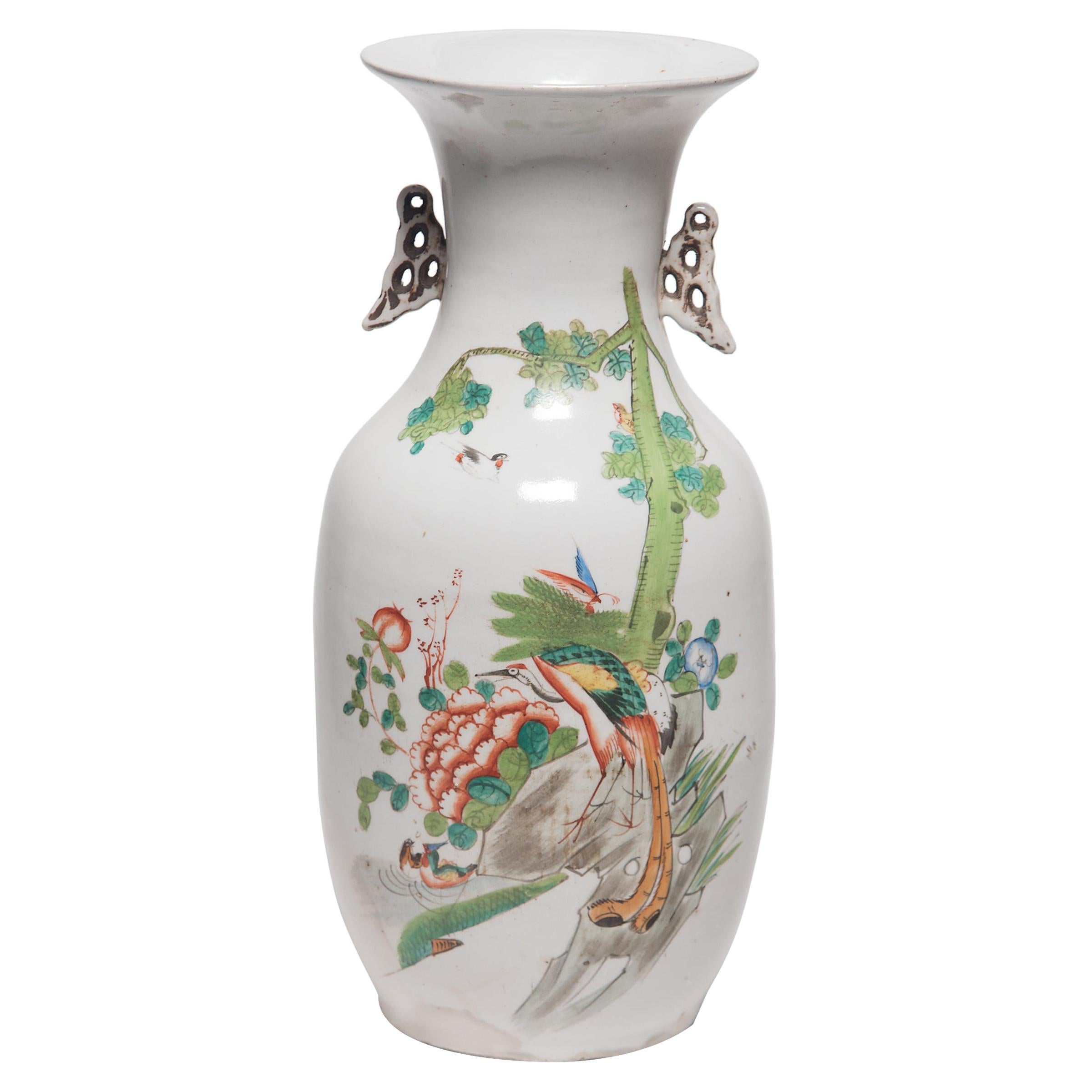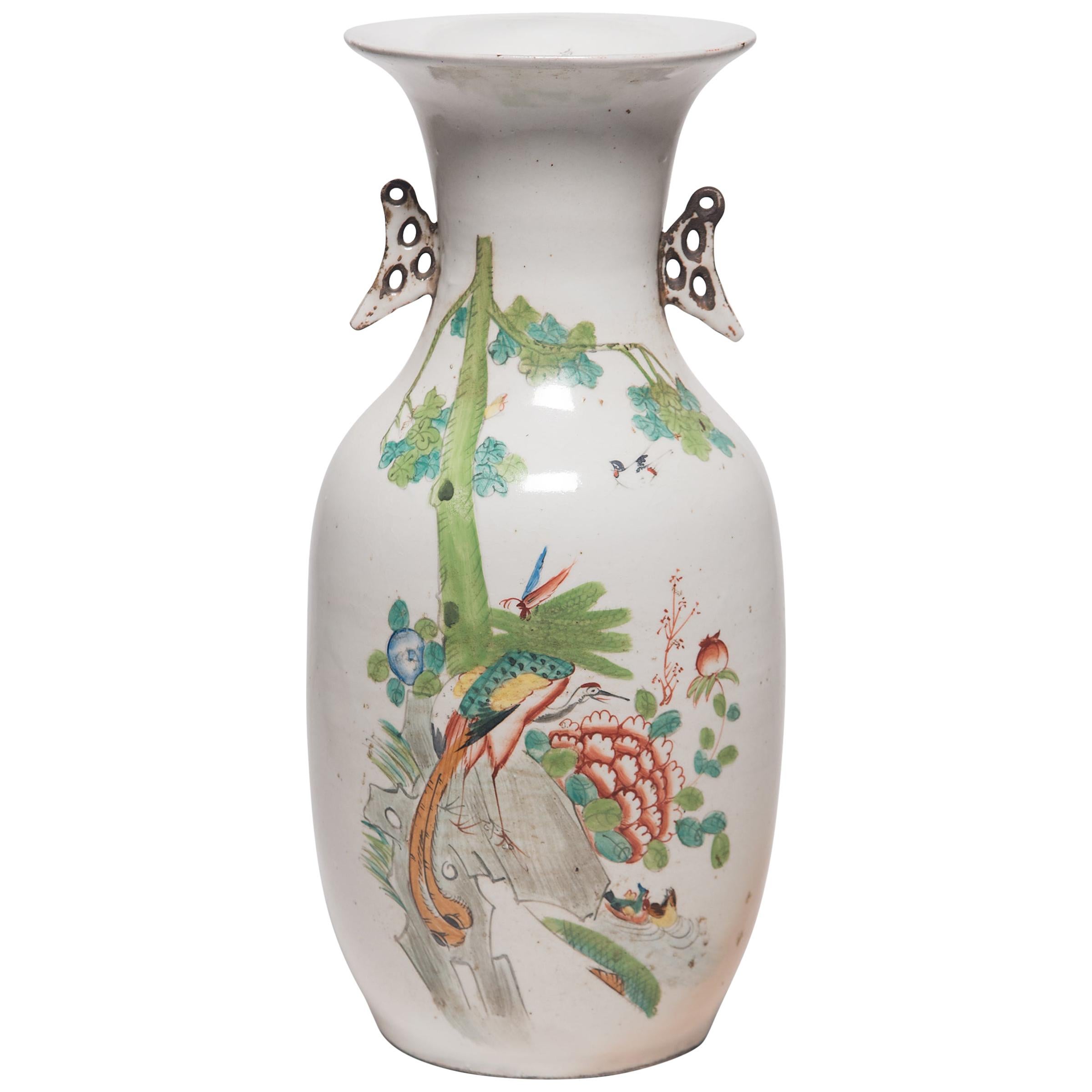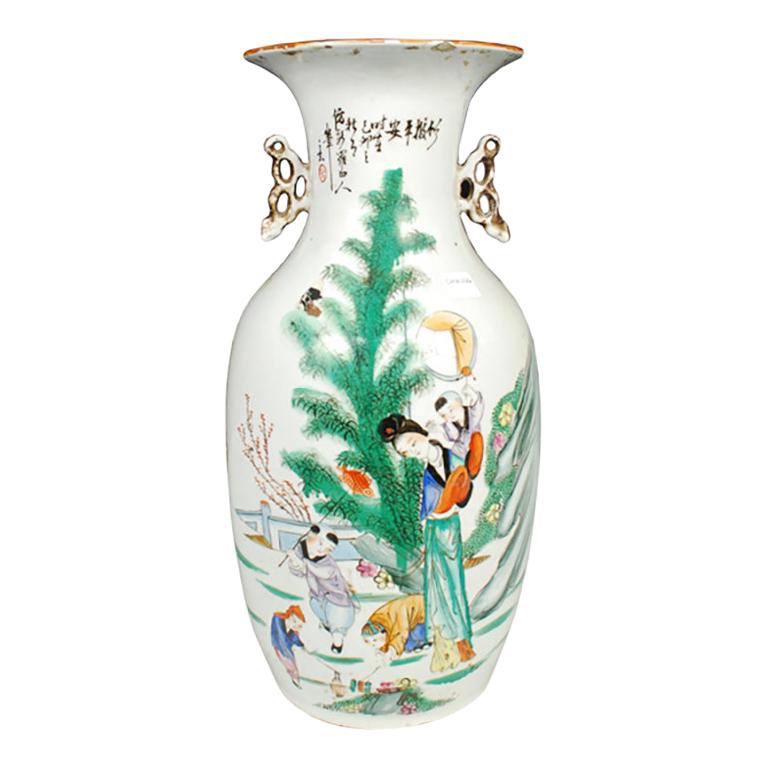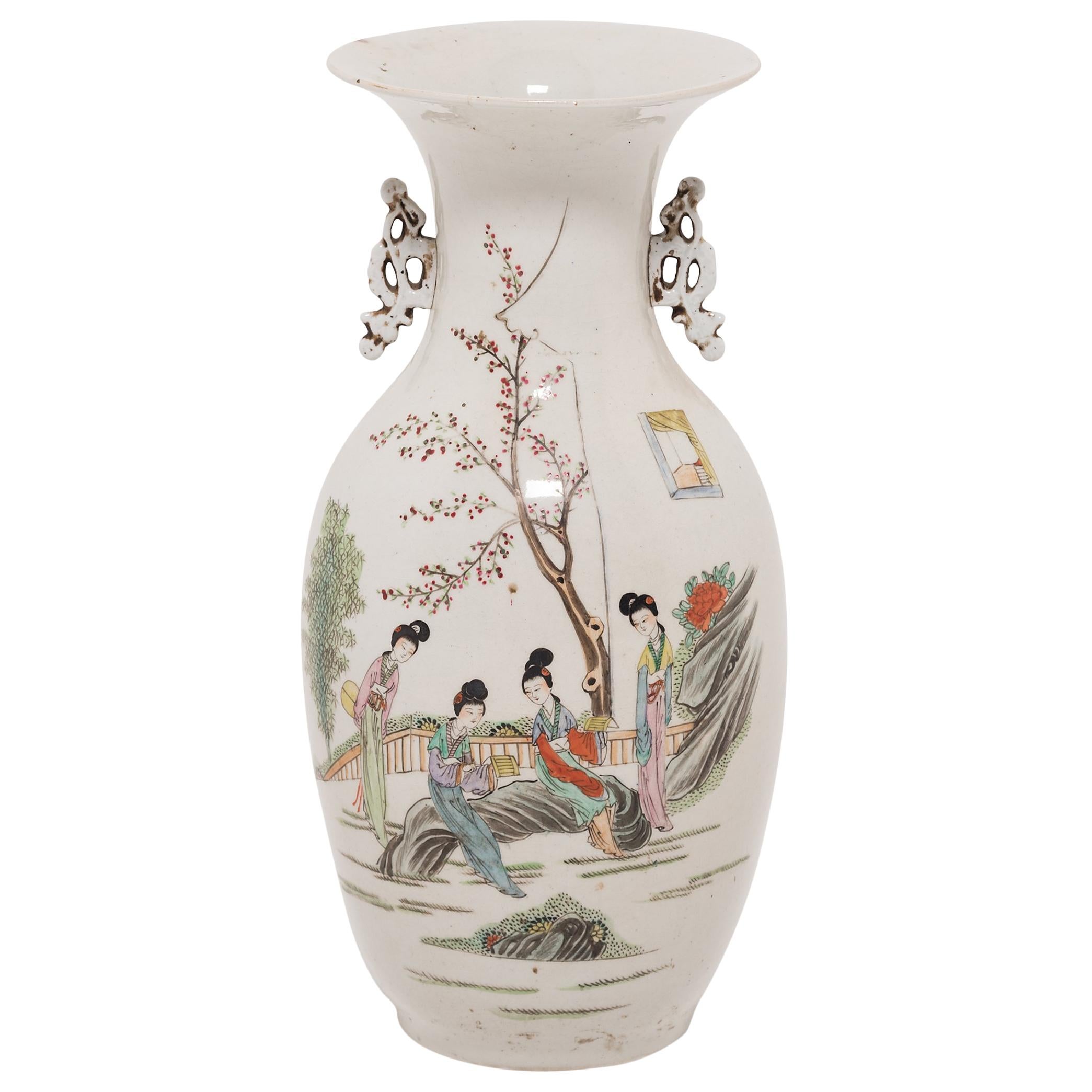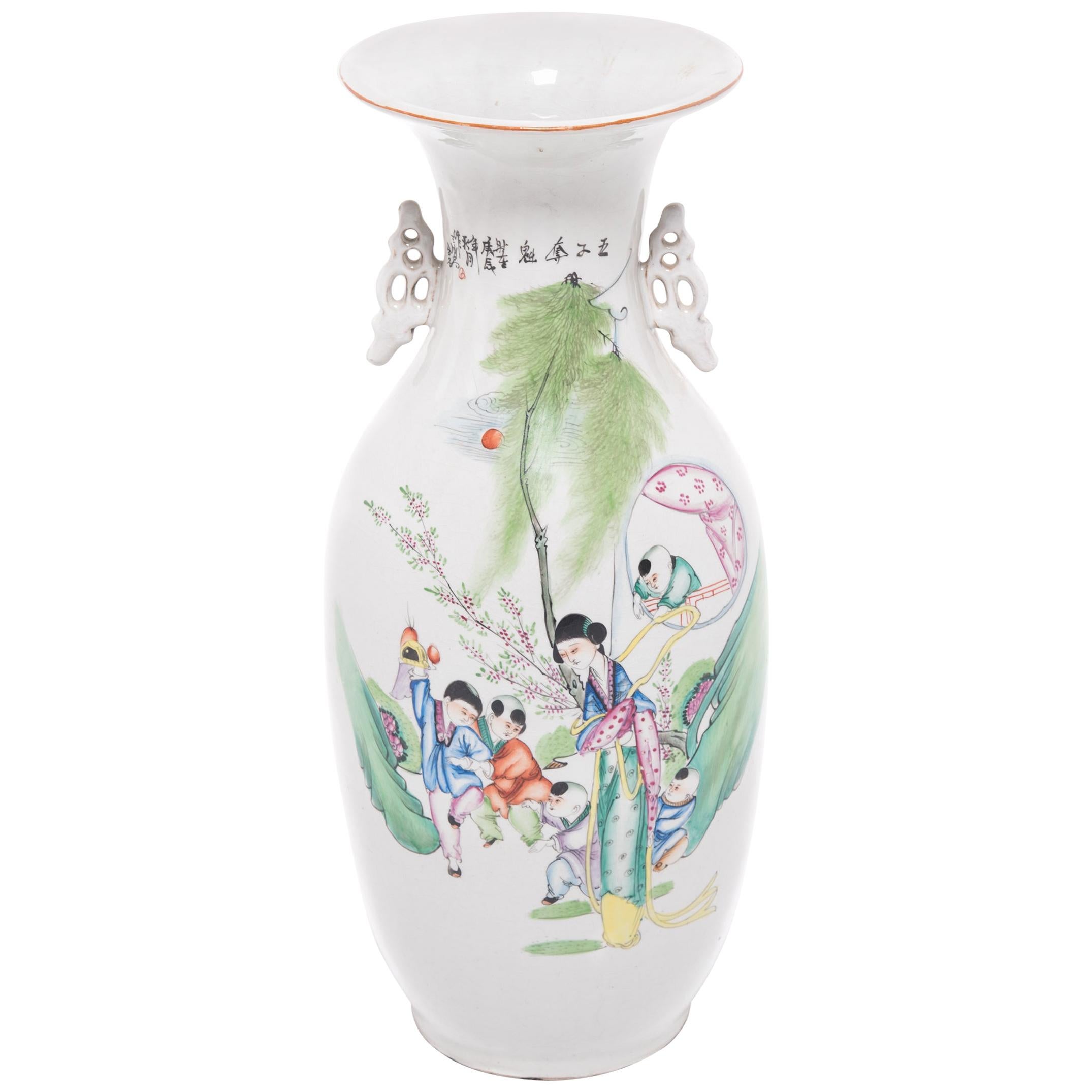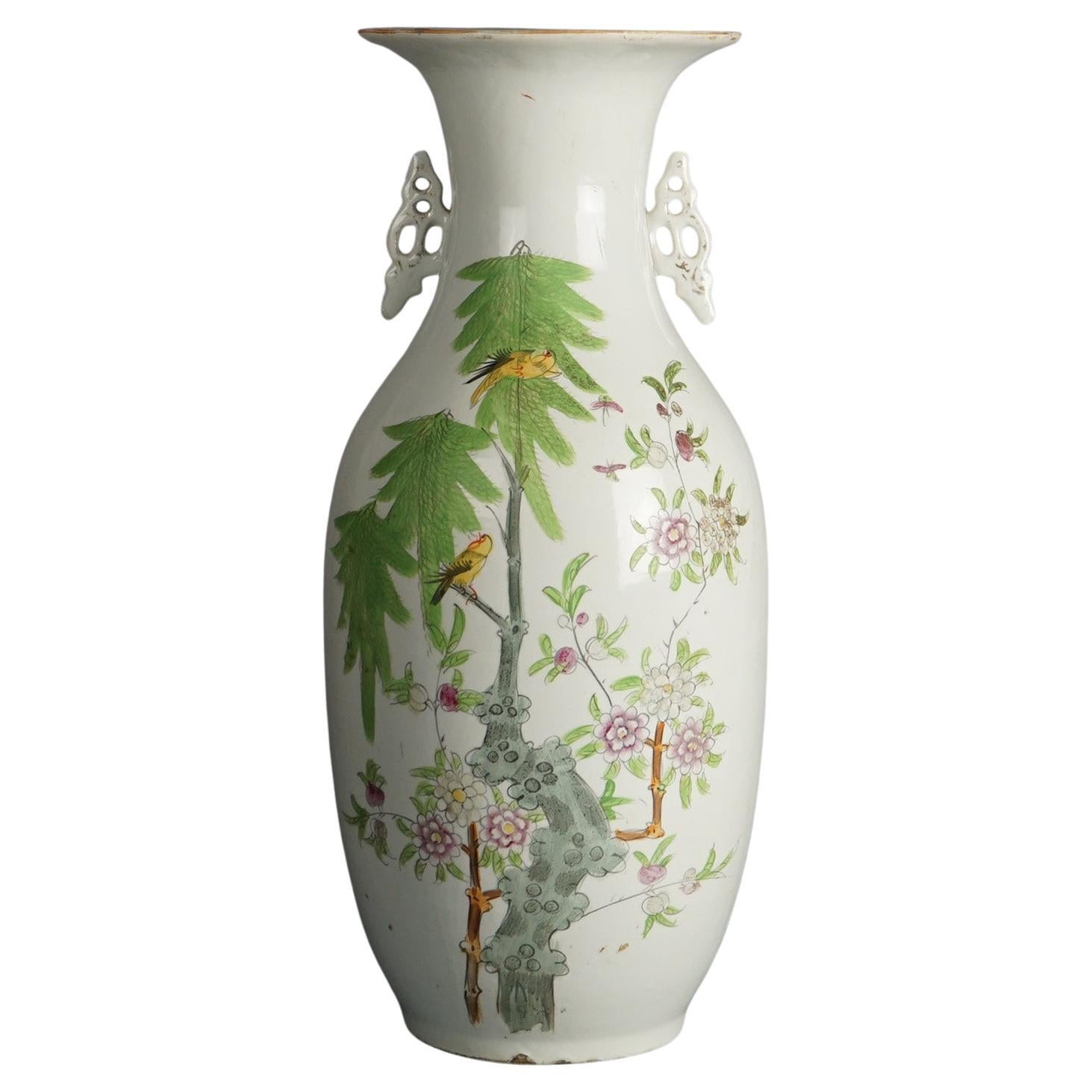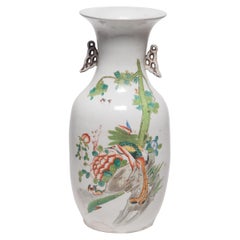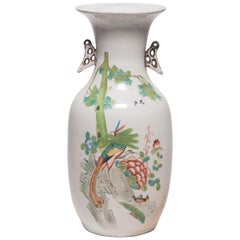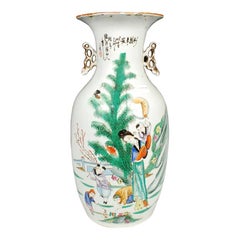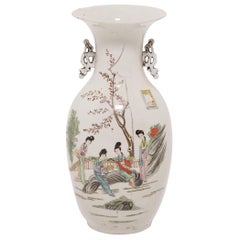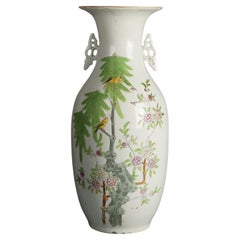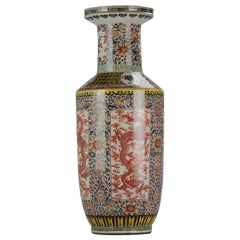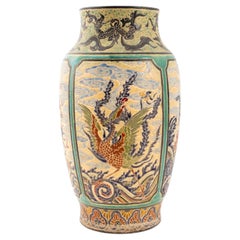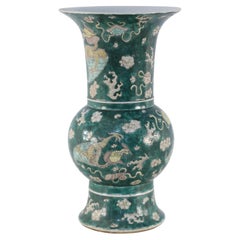Items Similar to Chinese Springtime Phoenix Tail Vase, c. 1900
Want more images or videos?
Request additional images or videos from the seller
1 of 6
Chinese Springtime Phoenix Tail Vase, c. 1900
$1,480
£1,118.70
€1,285.58
CA$2,060.89
A$2,292.66
CHF 1,201.84
MX$28,015.70
NOK 15,303.92
SEK 14,406.53
DKK 9,596.38
Shipping
Retrieving quote...The 1stDibs Promise:
Authenticity Guarantee,
Money-Back Guarantee,
24-Hour Cancellation
About the Item
Sculpted in a traditional Chinese phoenix tail vase form, this elegant early 20th century vase is adorned with a scene of magpies flitting between branches covered in cherry blossoms. Regarded as a bird of good omen, magpies bring joy and good fortune to those who encounter them. Paired with cherry blossoms, symbols of beauty and springtime renewal, this decoration is a powerful wish to achieve the joy of spring.
- Dimensions:Height: 18.25 in (46.36 cm)Diameter: 7.5 in (19.05 cm)
- Style:Qing (Of the Period)
- Materials and Techniques:Porcelain,Glazed
- Place of Origin:
- Period:
- Date of Manufacture:1900
- Condition:Wear consistent with age and use.
- Seller Location:Chicago, IL
- Reference Number:Seller: ZZZ102A1stDibs: LU820012374423
About the Seller
5.0
Platinum Seller
Premium sellers with a 4.7+ rating and 24-hour response times
Established in 1997
1stDibs seller since 2006
1,693 sales on 1stDibs
Typical response time: 1 hour
- ShippingRetrieving quote...Shipping from: Chicago, IL
- Return Policy
Authenticity Guarantee
In the unlikely event there’s an issue with an item’s authenticity, contact us within 1 year for a full refund. DetailsMoney-Back Guarantee
If your item is not as described, is damaged in transit, or does not arrive, contact us within 7 days for a full refund. Details24-Hour Cancellation
You have a 24-hour grace period in which to reconsider your purchase, with no questions asked.Vetted Professional Sellers
Our world-class sellers must adhere to strict standards for service and quality, maintaining the integrity of our listings.Price-Match Guarantee
If you find that a seller listed the same item for a lower price elsewhere, we’ll match it.Trusted Global Delivery
Our best-in-class carrier network provides specialized shipping options worldwide, including custom delivery.More From This Seller
View AllChinese Springtime Phoenix Tail Vase, circa 1900
Located in Chicago, IL
The phoenix tail vase form dates back as far as the bronze age and has remained a popular shape for its clean lines and graceful curves. Created in the early 20th century, this parti...
Category
Early 20th Century Chinese Qing Ceramics
Materials
Porcelain
Chinese Springtime Phoenix Tail Vase, circa 1900
Located in Chicago, IL
The phoenix tail vase dates from the bronze age and has remained a popular shape for its clean lines and graceful curves. Dating from circa 1900, this vase depicts a peacock in a lovely garden setting. Lavishly detailed and masterfully painted, the vase demonstrates the high level of craft obtained by Qing-dynasty ceramic...
Category
Early 20th Century Chinese Qing Vases
Materials
Porcelain
Century Chinese Spring Blossoms Phoenix Tail Vase, c. 1910
Located in Chicago, IL
Translated as “After the New Year, spring will begin in Suzhou (China’s garden city),” the beautifully scripted phrase painted at the top of this elegant vase is accompanied by the s...
Category
Early 20th Century Chinese Qing Ceramics
Materials
Porcelain
Four Seasons Chinese Phoenix Tail Vase, c. 1850
Located in Chicago, IL
The form of this 19th century porcelain vase is called "phoenix tail" for the way its flared mouth and slender waist mimic the shape of the auspicious bird. The vibrant painted scene...
Category
Antique Mid-19th Century Chinese Qing Ceramics
Materials
Porcelain
Chinese Phoenix Tail Vase with Figures in a Garden, c. 1850
Located in Chicago, IL
The form of this 19th century porcelain vase is called "phoenix tail" because of the way its flared mouth and slender waist mimic the shape of the bird. The vibrant landscape leaps o...
Category
Antique Mid-19th Century Chinese Qing Ceramics
Materials
Porcelain
Chinese Persimmon Phoenix Tail Vase with Cartouche Paintings, c. 1920s
Located in Chicago, IL
This vase is a perfect example of enduring Chinese symbolism and design. The attendants in the garden are watching over young boys playing with lotus branches, butterflies and small ...
Category
Early 20th Century Chinese Art Deco Ceramics
Materials
Porcelain
You May Also Like
Antique Chinese Hand Decorated Porcelain Floor Vase with Garden Scene C1920
Located in Big Flats, NY
Antique Chinese Hand Decorated Porcelain Double Handled Floor Vase with Garden Scene C1920
Measures- 21''H x 9''W x 9''D
Category
Early 20th Century Asian Ceramics
Materials
Porcelain
$760 Sale Price
20% Off
China 20th Century Dragon Vase of Chinese Porcelain, Mid-20th Century
Located in Amsterdam, Noord Holland
A very nicely decorated Vase with a scene of red dragons on a black and yellow ground.
Absolute top quality painting of the 20th century.
14-6-19-6-2
Overall condition; Ver...
Category
20th Century Chinese Ceramics
Materials
Porcelain
$5,749 Sale Price
20% Off
Bien Hoa Vietnamese Dragon Phoenix Vase
Located in Astoria, NY
Bien Hoa Vietnamese Ceramic Vase, polychrome glazed and incised with images of mythical creatures amongst clouds and waves comprising a qilin, dragon, turtle,...
Category
20th Century Archaistic Vases
Materials
Porcelain
$1,440 Sale Price
20% Off
Chinese Jingdezhen Tri-Color Phoenix-Tail Porcelain Vase
Located in Queens, NY
Antique Chinese (Early 20th Century) porcelain phoenix tail vase with a Jingdezhen style tri-color overglaze with a deep green, swirl-patterned ground and pale pink, yellow and blue ...
Category
20th Century Chinese Chinese Export Vases
Materials
Porcelain
Large Meiji Period Satsuma Earthenware Floor Vase
Located in Lymington, Hampshire
A large Meiji period Satsuma earthenware floor vase, the of baluster form, painted in pastel overglaze enamels and gilding with two large sprays of flowers including prunus blossom, ...
Category
Antique 1870s Japanese Meiji Ceramics
Materials
Enamel
Early Japanese Satsuma Antique Vase
By Satsuma
Located in Atlanta, GA
An Satsuma ceramic stone ware vase, circa 19th century, around the end of the Edo and the beginning of Meiji period. In the form of a Classic garlic bottle whose prototype was from China, the white bodied piece is decorated with an early form of kin nishikide, the so called golden brocade, a palette of iron-red, blue, green, yellow, purple and black with golden highlight. The over glazed enamel paint shows a group of robed figures in a garden setting with a lion and three tigers. A transparent overall glaze shows very fine crackles. The design is relatively sparse with plenty of negative space in contrast to the Satsuma production from the late 19th century, when the trend became fussy and overly glitz, due to the influence by the perceived western taste for the export market. This piece may still be made for export but its pattern was more influenced by both Kyoto Pottery and the Kano school of painting compared to the export ware by the end of the 19th century onward to the early 20th century. It was believed by many that this was a result of Satsuma potters visiting Kyoto in the late seventeenth century to learn over glaze painting techniques.
There are some age glaze crackles especially around the foot. The piece is not signed in keeping with the earlier production before Satsuma ceramics...
Category
Antique Mid-19th Century Japanese Japonisme Ceramics
Materials
Ceramic
$2,850 Sale Price
25% Off
More Ways To Browse
Used Furniture In Phoenix
Asian Vase With Birds
Antique Cherry Blossom
Porcelain Phoenix
Chinese Glazed Birds
Chinese Cherry Blossom
Cherry Blossom Vase
Chinese And Porcelain And Phoenix
Chinese Porcelain Phoenix
Phoenix Chinese Vase
Chinese Phoenix Birds
Cherry Blossom And Bird
Magpie Antique
Chinese Porcelain Phoenix Bird
Chinese Cherry Blossom Porcelain Vase
Enameled Chinese
Asia Minor
Brown And White China
